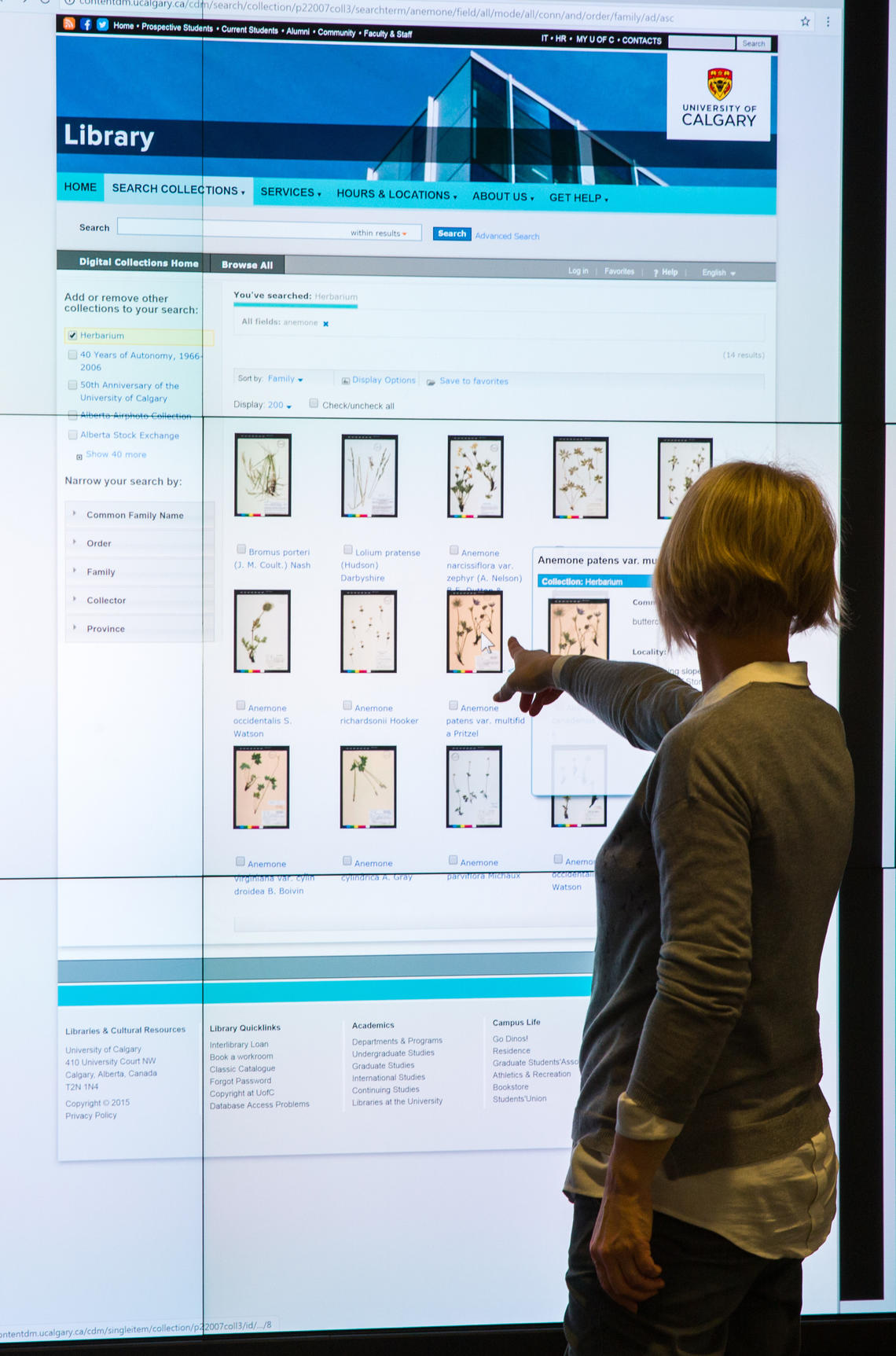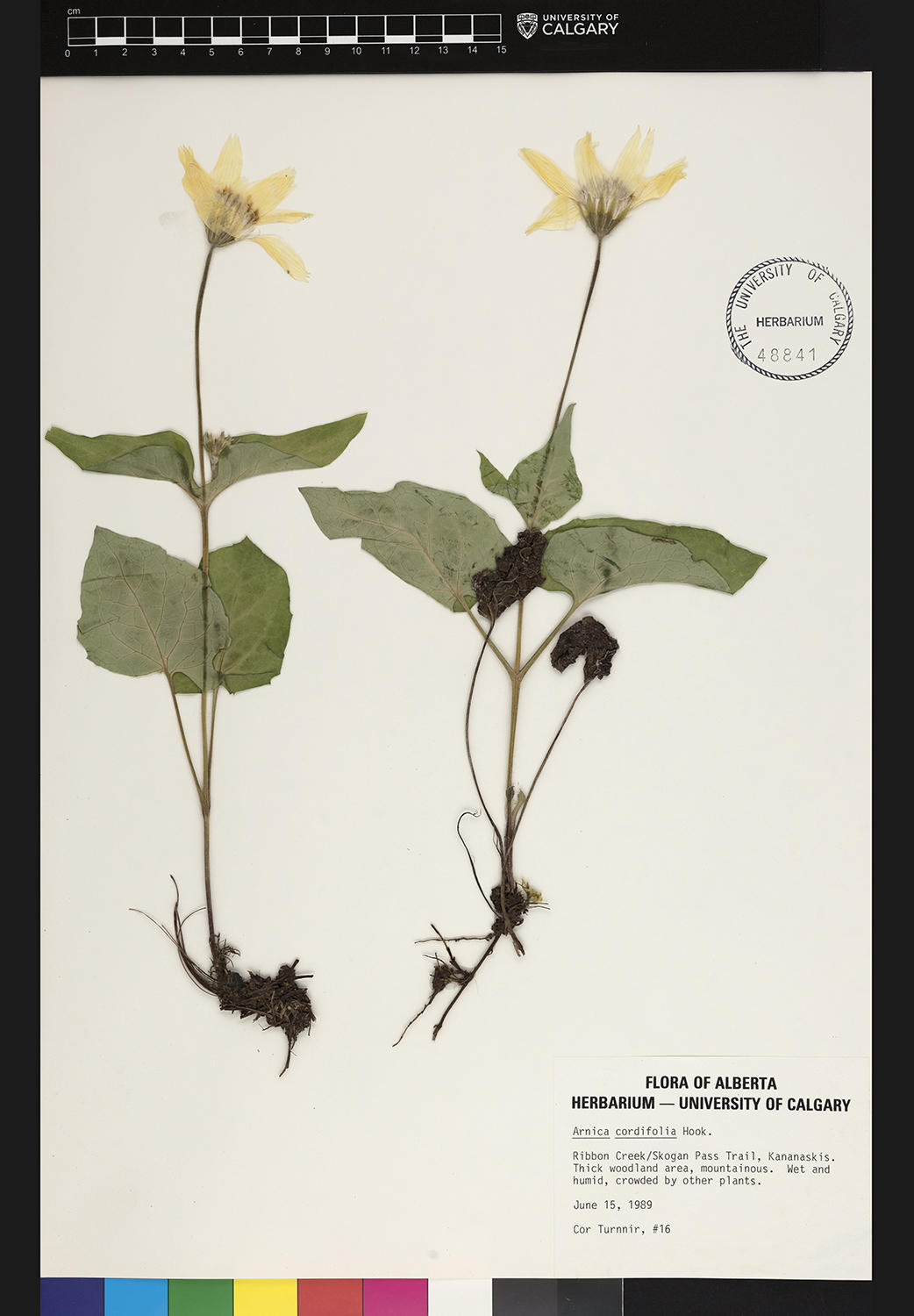Nov. 28, 2017
Digital collection of Alberta flora launched at University of Calgary

Understanding global change in living systems requires knowledge of baseline biodiversity. Thanks to a collaborative project between the University of Calgary’s herbarium and Libraries and Cultural Resources (LCR), a new digital resource collection of every species in the flora of Alberta is now available to researchers and naturalists across the globe.
The herbarium, located in the Biological Sciences building, has provided indispensable botanical resources for teaching, research and industry for more than 40 years. With an extensive collection of land plants from Alberta and around the world, the herbarium is dedicated to the collection, preservation and documentation of past and present plant biodiversity.
While the herbarium houses more than 90,000 plant specimens, only a fragment of the collection has been uploaded to the university’s digital collections.
“The variety and quality of specimens in our herbarium is really incredible,” says Jana Vamosi, associate professor of ecology and evolutionary biology, and herbarium director. “Our new online collection will give researchers, students and the public access to images and information on 1,700 specimens. This accounts for one specimen of every species in Alberta, with the exception of rare plants.”
Vamosi is pictured above, right, with digital special projects associate Rob Alexander, who oversaw the creation of the new online Flora of Alberta collection.

The project gives researchers, students and public access to information on 1,700 Alberta specimens.
Riley Brandt, University of Calgary
Digitizing specimens was team effort
The University of Calgary’s Digitization and Repository Services was granted funding from the Student Temporary Employment Program to hire former biological sciences student Anastasia Falkovskaya to liaise with Vamosi and herbarium technician Bonnie Smith over the past summer and choose specimens that would provide a useful collection. Falkovskaya digitized the selected specimens at the Taylor Family Digital Library using a high-resolution digital camera. Janice Caskey of LCR Metadata Services supported Falkovskaya in describing the images to make them discoverable.
Rob Alexander manages special projects for Digitization and Repository Services and oversaw the creation of this new collection. “The value in this collection is that it gives botanists, environmental consultants and plant lovers a place to go to learn about and identify Alberta plants,” he says. “Many of the specimens are works of art unto themselves, and now, even artists who want to study the plants to better paint them, can access them online.”

Arnica (Arnica cordifolia 'Hooker') is one species represented in the online collection.
University of Calgary Herbarium
Collections are key to understanding change in species
Curated information associated with biological collections like these are key to assigning conservation status and detecting changes in species distributions, including characterizing species invasions and understanding the impacts of climate change.
“We hope to continue this project and make more of our specimens available in this online resource,” says Vamosi. “Advances in our understanding of ecosystem functioning can only go so far without reliable information on the distribution and abundance of species around the globe. For most species, a great deal of this information comes from specimens in museums, and now, online collections.”
Those interested in viewing some of the herbarium’s specimens in person can visit the Faculty of Science’s new collection room on the fifth floor of the Biological Sciences building. The collection room is open Monday to Friday, 8:30 a.m. to 12:00 p.m. and 1 to 4:30 p.m. Additional images of the herbarium and other Faculty of Science collections — geoscience, invertebrate and vertebrate — can be accessed through the collections room website.
